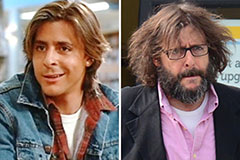Key Steps for Successful Blog Post Mold And Mildew Remediation
Resolving mold and mildew issues in a timely and effective fashion is essential for keeping a healthy interior setting. Efficiently completing mold removal is a complex process that needs focus to detail and adherence to details protocols. From inspecting treated locations to carrying out wetness control actions, each step plays an essential function in making certain the effectiveness of the removal procedure. However, there are key post-remediation steps that are similarly important but usually ignored. These steps not only validate the success of the removal initiatives yet also add to preventing future mold growth.
Evaluation of Treated Locations
Upon conclusion of the mold remediation process, a detailed inspection of the treated locations is critical to guarantee the effectiveness of the removal efforts. This assessment works as a critical action in the post-remediation phase to confirm that the mold elimination and clean-up procedures were effective in getting rid of the mold problem and bring back a safe indoor atmosphere. The evaluation should be performed by certified professionals that have the competence to analyze the remediated locations diligently.
These consist of visual assessments to check for any indicators of mold and mildew development or water damage, dampness levels to confirm that the area is dry and complimentary of excess humidity that could promote mold and mildew re-growth, and air quality screening to make certain that the interior air is secure to take a breath. Additionally, the assessment might entail making use of specialized tools such as moisture meters and thermal imaging cameras to spot surprise mold or moisture pockets that could lead to future mold and mildew issues if left unchecked.

Wetness Control Actions
Efficient dampness control actions are crucial for avoiding mold development and maintaining a healthy interior environment. To accomplish this, it is crucial to deal with resources of wetness within the structure. Correct air flow is essential to controlling humidity levels. Setting up exhaust fans in kitchen areas and restrooms can help remove excess moisture. Additionally, utilizing dehumidifiers in wet locations can assist decrease moisture levels, making it harder for mold and mildew to thrive.
On a regular basis checking and keeping the building's exterior can additionally prevent wetness invasion. Post Remediation Inspection near me. Ensuring that gutters are clear, downspouts straight water away from the foundation, and the roofing system remains in excellent condition can assist stop water from leaking into the structure. Appropriately sealing home windows and doors can also help keep wetness out
Any kind of leakages or spills need to be cleaned up and dried within 24-48 hours to prevent mold development. By executing these wetness control steps, the risk of mold and mildew returning can be significantly lowered, producing a much healthier interior setting.
Proper Air Flow Evaluation
An important aspect of guaranteeing a healthy interior environment message mold remediation is conducting an extensive analysis of the ventilation system. After mold remediation. Proper air flow evaluation plays an important duty in protecting against future mold and mildew development and maintaining air top quality within the afflicted room. During the analysis, experts evaluate the effectiveness of the air flow system, looking for any blockages, leaks, or malfunctions that can hinder proper air movement. It is important to ensure that the ventilation system is appropriately sized for the room it offers and that it meets industry standards for air exchange prices.
Furthermore, examining the ventilation system consists of checking out the distribution of air throughout the area to identify any kind of areas of inadequate blood circulation where wetness and impurities might collect. Correct air flow not only helps in regulating humidity levels yet likewise help in getting rid of airborne mold and mildew spores and other pollutants, consequently improving overall indoor air top quality. By resolving any type of ventilation issues post mold removal, homeowner can produce a healthier and a lot more comfortable setting for occupants while lowering the threat of mold and mildew re-infestation.
Cleansing and Sanitation Protocols
To make certain comprehensive mold and mildew remediation, careful adherence to certain cleansing and sanitation methods is necessary. Cleansing and sanitation protocols play a vital duty in the post-mold remediation stage to protect against the reoccurrence of mold and mildew development and make sure a safe and healthy and balanced environment. The very first step in this process is the removal of any kind of visible mold and mildew growth using suitable cleaner and methods. It is important to utilize EPA-approved fungicides and disinfectants to effectively get rid of mold spores and avoid their regrowth.
After the initial cleansing, complete disinfection of the impacted locations is required to eliminate any type of continuing to be mold spores and prevent their spreading. This step is vital in protecting against the spread of mold and mildew to other components of the building. In addition, carrying out precautionary procedures such as using mold inhibitors and keeping appropriate ventilation can help lessen the risk of future mold invasions. By adhering to rigorous cleaning and disinfection protocols, homeowner can guarantee the effective removal of mold and mildew and produce a healthy and balanced indoor atmosphere for owners.
Surveillance and Maintenance Strategy
Implementing a routine tracking and maintenance plan is necessary for guaranteeing the long-term performance of mold and mildew removal efforts. As soon as mold removal is completed, it is critical to establish a surveillance schedule to review the success of the removal procedure. This involves consistently examining the formerly impacted areas for any kind of signs of mold and mildew reoccurrence or water damages. By performing routine checks, any type of new mold growth can be quickly determined and resolved, stopping a reoccurrence of the initial trouble.
In addition, establishing a maintenance strategy is crucial to stopping future mold concerns. Normal you can find out more maintenance not just assists in avoiding mold and mildew but likewise contributes to keeping a healthy and balanced interior setting - After mold remediation.
Conclusion
To conclude, effective article mold removal entails extensive evaluation of dealt with locations, execution of wetness read the full info here control steps, analysis of appropriate air flow, adherence to cleaning and sanitation protocols, and facility of a tracking and upkeep strategy. These vital actions are vital to make certain that mold development is efficiently removed and stopped from persisting in the future. By adhering to these guidelines, homeowner can preserve a healthy and balanced and secure setting for passengers.
Upon conclusion of the mold removal process, an extensive examination of the treated locations is essential to ensure the performance of the remediation efforts. These include aesthetic evaluations to inspect for any type of indicators of mold and mildew growth or water damage, wetness levels to verify that the area is free and completely dry of excess moisture that might advertise mold re-growth, and air high quality screening to make certain that the interior air is risk-free to take a breath. Additionally, the examination may entail utilizing specialized devices such as dampness meters and thermal imaging video cameras to discover surprise mold or dampness pockets that can lead to future mold problems if left unattended. By addressing any kind of air flow issues upload mold and mildew removal, building proprietors can create a much healthier and much more comfortable atmosphere for passengers while minimizing the danger of mold and mold removal on grout mildew re-infestation.

 Bradley Pierce Then & Now!
Bradley Pierce Then & Now! Judd Nelson Then & Now!
Judd Nelson Then & Now! Shane West Then & Now!
Shane West Then & Now! Freddie Prinze Jr. Then & Now!
Freddie Prinze Jr. Then & Now! Elisabeth Shue Then & Now!
Elisabeth Shue Then & Now!